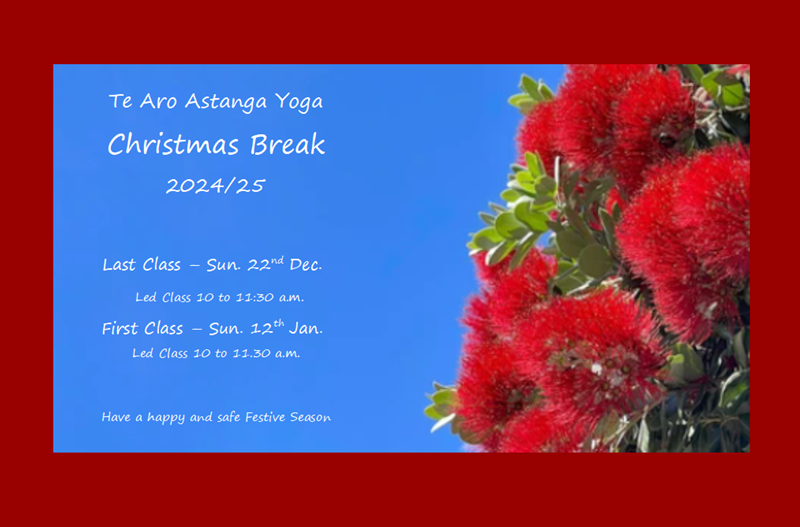 In the more than 20 years that I have been practising Ashtanga Yoga its popularity around the world has increased exponentially. At the same time many other styles or methods of practice have also proliferated, to the point that someone thinking of starting a yoga practice has a huge range of choice. I thought that I might give my take on what to look out for if you are thinking of starting an Ashtanga Vinyasa practice.
In the more than 20 years that I have been practising Ashtanga Yoga its popularity around the world has increased exponentially. At the same time many other styles or methods of practice have also proliferated, to the point that someone thinking of starting a yoga practice has a huge range of choice. I thought that I might give my take on what to look out for if you are thinking of starting an Ashtanga Vinyasa practice.
My first word of warning is this: Be aware that the Ashtanga Yoga practice is extremely addictive for some people, including myself. I cannot imagine not doing Ashtanga now as it is an essential part of my life. Not everyone is affected by this addiction, but be prepared that you may be. I can think of a lot worse things to be addicted to.
I have often read that Ashtanga is only suitable for young, fit and flexible people. With typical bluntness, Guruji always said that everyone can do Ashtanga except for lazy people. To get the full benefit of this practice you have to be prepared to work consistently and with diligence. There are no short cuts, no easy routes through the challenges that Ashtanga puts in front of us. The only way is practice, practice, practice.
It is crucial that you choose a good teacher to guide you in the Ashtanga practice. So how do you know if a teacher is the right one for you? Here are a few tips:
Ashtanga should be taught “Mysore Style”. It is okay to do the odd Led class, but only practising in Led classes is not going to give you the full benefit of working on a personal level with the teacher and getting the full benefit of the practice. Remember, if every class at a studio is a Led class then it is not Ashtanga Vinyasa Yoga.
Select a teacher who has some years of experience and who has been to Mysore to study more than once or twice over and extended period of time. In the Mysore Style of teaching there is no substitute for experience and also no substitute for studying in Mysore. Trips to Mysore give a teacher a true respect for parampara or the lineage.
A good teacher should be friendly and approachable. Avoid a teacher who just wants to tell you what to do all the time. One of the beautiful things about the Mysore Style is the opportunity it gives you to work things out in your own body in your own time. It is essential that you give your body the time to work out how each asana is going to sit for it and having a teacher who is constantly correcting you is counter productive to this process.
A good teacher will be willing to listen to what you have to say and respond to the things that you need to know. They should never keep pushing you in an adjustment if you have told them where you are comfortable. They should never force you to do more than you are comfortable doing. They should be gently encouraging and careful about how and when they challenge you to extend yourself. They should not be continually pushing you to do more asana, but instead be taking the “slowly, slowly” approach to giving you more asana.
A good teacher will be a pragmatist, not a zealot. They will understand and accept where you are with your practice and what you want to achieve from it. They will recognise that your practice should support you in your day to day life, not take over your life.
When you first attend a Mysore Style class there are a few things to look out for. The class should feel focussed but relaxed. The breath should be the dominant feature, not the voice of the instructor. If the class looks and feels like a circus class, or a gym workout, it probably is. If people are looking grim faced and overwhelmed, then it is probably best to quietly walk away.
Remember that in Ashtanga Vinyasa yoga we do not use props or straps. There is a good reason for this. A prop or strap may give you a better stretch in an asana, but there is an essential ingredient missing. A strap or prop interferes with the flow of energy in the asana. They also dampen the motivation to achieve the correct bind. This is also true of adjustments given by a teacher. There is never a need to use a strap of prop in an adjustment. Again, it may give a better stretch, but that essential flow of energy between the student and the teacher, through the hands, is missing. If a teacher does not have the necessary strength to give an adjustment without a strap, then they should not be doing that adjustment. If there are straps and props everywhere then it is an Iyengar class, not an Ashtanga one.
In the end, I think that most people know fairly early on if the teacher or the studio or Ashtanga is right for them. Sometimes this may be because the impulse is not there or the time is not right for you. I always recommend that you trust your instincts on this. The Mysore Style carries with it a strong personal relationship with the teacher and it is important that you are comfortable with them and with the practice.

0 Comments